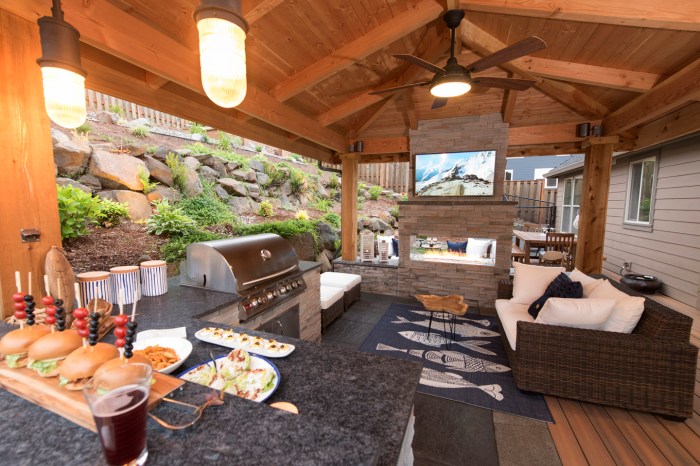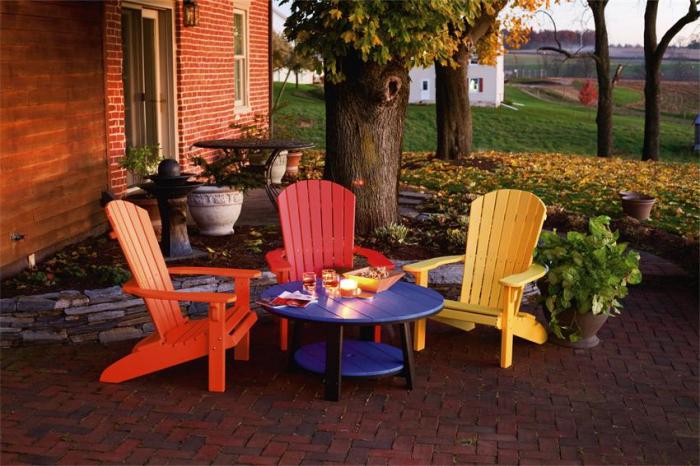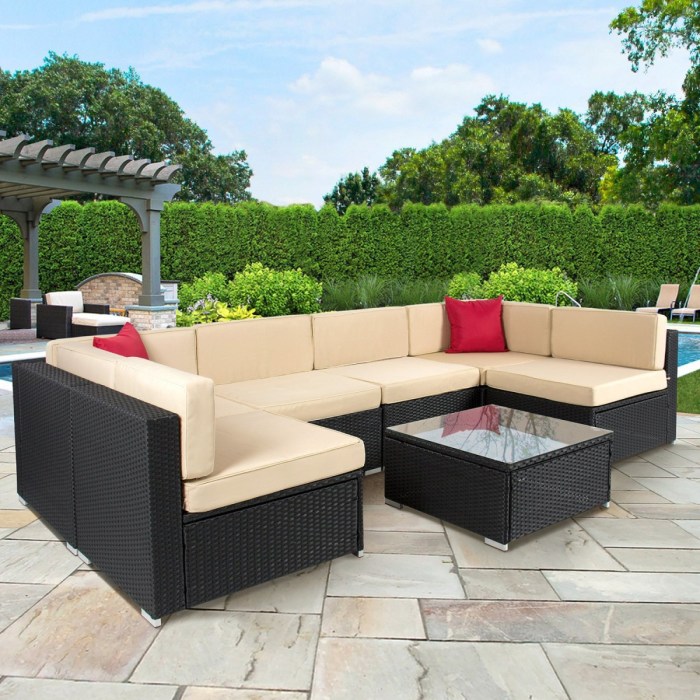Commercial Patio Lounge Chairs A Deep Dive
Commercial patio lounge chairs are more than just seating; they’re key elements in shaping the ambiance and experience of outdoor spaces for businesses. From restaurants to hotels, these chairs need to be durable, stylish, and comfortable for patrons. This comprehensive guide explores the world of commercial patio lounge chairs, covering everything from materials and design considerations to maintenance and pricing strategies.
This detailed analysis examines various aspects of commercial patio lounge chairs, including the materials used in their construction, design considerations for different business settings, maintenance tips, pricing strategies, and case studies showcasing successful implementations. Understanding these facets allows businesses to make informed decisions when choosing the right chairs for their needs.
Introduction to Commercial Patio Lounge Chairs
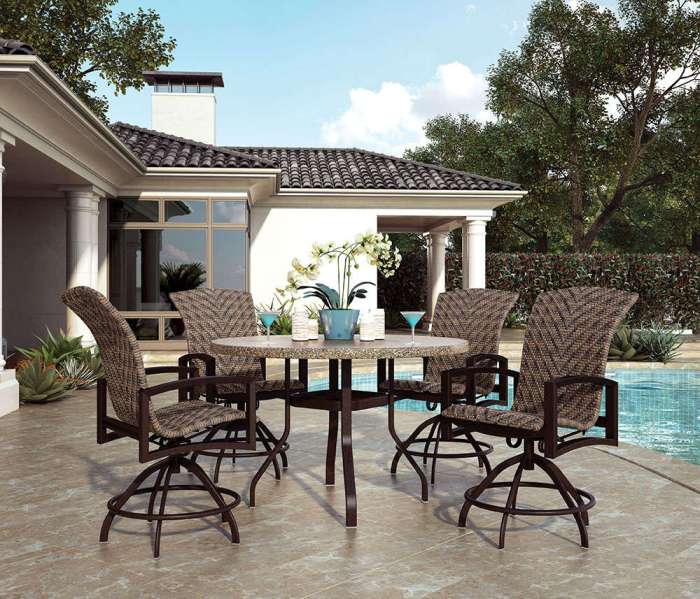
Source: gethypervisual.com
Commercial patio lounge chairs are designed for high-traffic, outdoor settings like restaurants, hotels, resorts, and community spaces. These chairs prioritize durability, weather resistance, and aesthetic appeal to maintain a professional and inviting atmosphere. Their robust construction and varied styles are crucial for withstanding the rigors of consistent use and outdoor elements.
These chairs are a significant investment for businesses, providing comfortable seating for patrons and contributing to the overall ambiance of the space. They often feature superior quality materials, ensuring long-lasting use and minimal maintenance. Their design and style can be carefully chosen to complement a specific aesthetic, while also factoring in the needs of the environment.
Materials Used in Construction
Commercial patio lounge chairs are constructed from a range of durable materials. A variety of materials are used for different purposes, offering varying levels of weather resistance and longevity. These materials are selected to endure the elements and maintain their structural integrity.
- Aluminum: Lightweight yet strong, aluminum frames are resistant to rust and corrosion, making them ideal for outdoor use. They offer a clean aesthetic and are relatively easy to maintain.
- Steel: Steel frames, often powder-coated for protection, are known for their strength and resilience. They can withstand heavy use and harsh weather conditions, but are typically heavier than aluminum.
- Wicker/Rattan: Natural materials like wicker and rattan provide a stylish, warm aesthetic. These are often paired with cushions made of weather-resistant fabrics for added comfort.
- Resin/Plastic: Resin and plastic frames are lightweight and durable. They resist rust and require minimal maintenance, making them a cost-effective choice for many applications. However, they might not have the same aesthetic appeal as natural materials.
Styles and Designs
The styles and designs of commercial patio lounge chairs are diverse. The selection can be matched to the overall theme of the outdoor space, enhancing the aesthetic and comfort.
- Modern: Sleek lines, minimalist designs, and often utilize metal frames with contemporary cushions.
- Traditional: Classic designs often incorporate wood or wicker frames, and traditional patterns or colors in the cushions.
- Tropical: These chairs incorporate natural materials like wicker or rattan with comfortable cushions and often vibrant colors, creating a warm and inviting atmosphere.
- Coastal: Light colors, neutral tones, and potentially wicker or resin materials are commonly found in this style, creating a relaxed and breezy feel.
Durability and Weather Resistance
Durability and weather resistance are paramount for commercial patio lounge chairs. These features are essential to ensure longevity and maintain the quality of the outdoor space. Chairs should withstand harsh weather conditions, including rain, sun, and potential damage from wind and debris.
“High-quality commercial patio lounge chairs are designed to endure prolonged outdoor exposure and frequent use.”
Comparison of Commercial Patio Lounge Chairs
| Type | Material | Style | Price Range (USD) |
|---|---|---|---|
| Aluminum Frame | Aluminum | Modern, Contemporary | $150-$350 |
| Steel Frame | Powder-coated Steel | Traditional, Transitional | $200-$400 |
| Wicker/Rattan | Wicker/Rattan | Tropical, Coastal | $300-$600+ |
| Resin/Plastic | Resin/Plastic | Modern, Contemporary | $100-$250 |
Note: Prices are estimates and can vary based on specific features, size, and brand.
Design Considerations for Commercial Use
Commercial patio lounge chairs, intended for high-traffic public spaces, demand a unique set of design considerations beyond those for residential use. These considerations ensure comfort, safety, durability, and aesthetics that meet the needs of diverse clientele and maintain a professional image for businesses. Prioritizing these elements ensures a positive guest experience and contributes to a successful establishment.
Factors Influencing Selection for Specific Settings
Selecting the right commercial patio lounge chairs depends heavily on the specific setting. Restaurants, hotels, and resorts each have unique requirements. For instance, a bustling restaurant patio needs chairs with quick-drying fabrics and easy-to-clean surfaces to handle spills and general wear. Hotels and resorts, on the other hand, might prioritize a more upscale aesthetic and a higher degree of comfort for extended guest stays. Careful consideration of these differences is crucial for optimizing the chair’s effectiveness in its designated environment.
Importance of Comfort and Ergonomics for Prolonged Use
Commercial furniture must prioritize comfort for users who might be seated for extended periods. Ergonomic design is essential to minimize strain and discomfort, leading to a more positive guest experience. Chairs should offer adequate support for the back and shoulders, promoting relaxation and preventing fatigue. Careful attention to seat depth and backrest angle is paramount. Adjustability, where possible, further enhances comfort for varied body types.
Safety Standards and Regulations for Commercial Furniture
Safety is paramount in commercial settings. Compliance with relevant safety standards and regulations is crucial to ensure the well-being of guests and staff. This includes rigorous testing for stability, load capacity, and resistance to tipping or other hazards. Materials used should meet fire safety regulations and standards, minimizing potential risks. The chairs must meet industry-specific standards for durability and safety, such as those set by ANSI (American National Standards Institute) or other relevant organizations.
Factors Influencing Aesthetic Appeal
The aesthetic appeal of commercial patio lounge chairs plays a vital role in creating a positive first impression and reflecting the brand’s image. Considerations include material selection, color palette, and overall design style. Matching the aesthetic to the surrounding environment is essential for creating a harmonious ambiance. For example, a modern hotel might choose sleek, minimalist designs, while a casual cafe might opt for a more relaxed, natural style.
Comparison of Seating Arrangements and Suitability
Different seating arrangements cater to various needs in commercial spaces. A traditional row arrangement is often suitable for restaurants and hotels, facilitating efficient seating and service. A more relaxed grouping of lounge chairs, on the other hand, might be more appropriate for hotel lobbies or resort relaxation areas, promoting a sense of conviviality and ease. Modular seating allows for flexibility and adaptability to changing needs, especially in settings with varying occupancy levels.
Seating Arrangement Table for Different Commercial Settings, Commercial patio lounge chairs
| Commercial Setting | Preferred Seating Arrangement | Justification |
|---|---|---|
| Restaurant Patio | Traditional rows or clustered groupings | Facilitates efficient service and flow, potentially with bar seating nearby |
| Hotel Lobby | Relaxed groupings or modular setups | Encourages mingling and relaxation, creating a welcoming atmosphere |
| Resort Poolside | Comfortable, spacious groupings, possibly with shade options | Promotes relaxation and enjoyment of the surrounding environment |
| Cafe Patio | Relaxed groupings or individual tables with chairs | Creates a casual and inviting atmosphere for coffee and socializing |
Materials and Construction
Commercial patio lounge chairs demand robust construction to withstand heavy use and diverse weather conditions. Choosing the right materials and manufacturing processes directly impacts the chair’s longevity, durability, and ultimately, its cost. This section delves into the various material options, their associated advantages and disadvantages, and how these choices affect the overall product.
Material Selection
The selection of materials for commercial patio lounge chairs is a crucial aspect of the design process. Considerations include resistance to UV degradation, moisture absorption, and the ability to maintain structural integrity under prolonged use. Different materials excel in specific aspects, offering varying degrees of durability and aesthetic appeal.
Common Materials and Their Properties
- Aluminum: Aluminum frames are lightweight yet exceptionally strong. They resist rust and corrosion, making them suitable for outdoor use. Their lightness contributes to ease of movement and transport. However, aluminum can be susceptible to dents or scratches, requiring careful handling during manufacturing and transportation. Powder-coated aluminum further enhances its durability and aesthetic appeal, but this adds to the cost.
- Steel: Steel frames are known for their strength and resilience. They can withstand significant weight and stress. However, steel is heavier than aluminum, impacting transportation and potentially affecting the chair’s overall cost. Coatings like powder coating or galvanizing are crucial to prevent rust and extend the lifespan of steel chairs. The thickness of the steel sheet used also affects the cost and strength.
- Wicker/Rattan: Natural materials like wicker and rattan offer a warm, inviting aesthetic. They are often interwoven for strength, although they are not as strong as metal frames. These materials can be susceptible to weathering and moisture damage, potentially requiring more maintenance. Synthetic wicker is a more durable alternative, but it is generally more expensive than natural wicker. These are usually paired with metal frames to support their weight.
- Wood: Wood offers a classic, natural look. Different types of wood vary significantly in their durability and resistance to moisture. Pressure-treated lumber and hardwoods are more suitable for outdoor use, but even these require regular maintenance and protection from the elements. Wood is susceptible to rotting and insect infestation if not treated properly. Wood frames are usually more expensive than metal frames.
Manufacturing Processes
The manufacturing processes directly influence the quality and durability of the final product. Precise welding, meticulous finishing, and the use of high-quality fasteners are essential for long-term performance. Different materials necessitate different manufacturing techniques, affecting the complexity and cost of production. Automation can streamline production, potentially lowering the cost per unit, while also improving the consistency of the chairs.
Durability and Longevity Comparison
The durability and longevity of commercial patio lounge chairs depend on several factors, including the chosen material, the quality of the manufacturing process, and the level of maintenance. Aluminum frames are generally more resistant to weathering and corrosion, leading to a longer lifespan compared to wood frames. Steel, with appropriate coatings, exhibits high durability, although the initial cost might be higher. Wicker/Rattan, especially natural varieties, require more maintenance to preserve their integrity, potentially affecting their longevity.
Cost Impact of Material Choices
The cost of materials significantly influences the overall price of the commercial patio lounge chairs. Aluminum is generally less expensive than steel, while wood and high-quality wicker/Rattan are usually more expensive. Manufacturing processes and required coatings can also contribute to the final cost. The decision to use a more expensive material may be offset by a longer lifespan and reduced maintenance costs over time.
Material Comparison Table
| Material | Advantages | Disadvantages |
|---|---|---|
| Aluminum | Lightweight, strong, rust-resistant, relatively low cost | Susceptible to dents, scratches, may require powder coating for aesthetics |
| Steel | Extremely strong, high load capacity, durable | Heavier than aluminum, requires coatings for rust prevention, higher initial cost |
| Wicker/Rattan (Natural) | Aesthetically pleasing, natural look | Susceptible to weathering, moisture damage, requires regular maintenance, less durable |
| Wicker/Rattan (Synthetic) | More durable than natural, resists moisture | More expensive than natural wicker, may not have same aesthetic appeal |
| Wood | Classic look, natural material | Susceptible to rot, insect infestation, requires regular maintenance, higher maintenance cost |
Maintenance and Care
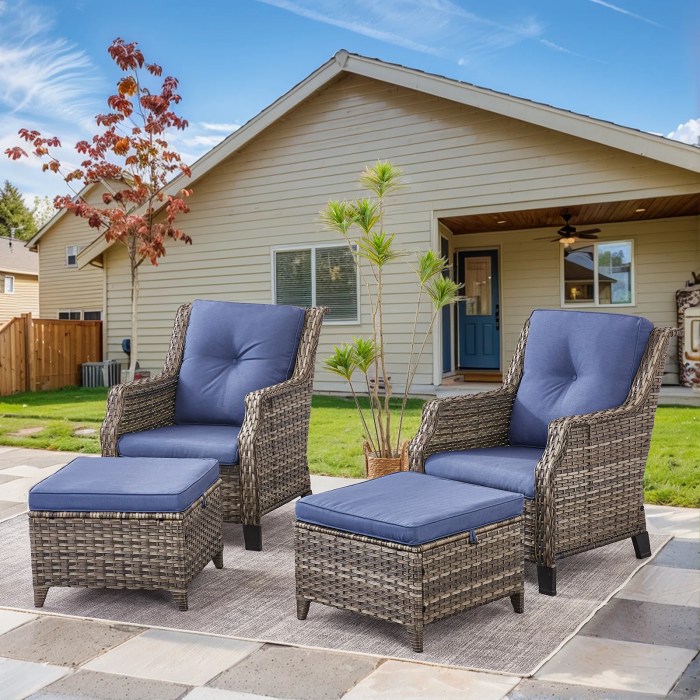
Source: wfcdn.com
Proper maintenance is crucial for extending the lifespan and ensuring the aesthetic appeal of commercial patio lounge chairs. Regular cleaning and meticulous storage practices significantly impact the chairs’ longevity and their continued usability for years to come. Consistent care reduces the need for costly repairs and replacements, ultimately saving money in the long run.
Cleaning and Maintenance Methods
Maintaining the pristine condition of commercial patio lounge chairs involves a range of cleaning methods tailored to the specific materials used. Careful attention to detail and adherence to the manufacturer’s recommendations are key to preserving the chairs’ quality and appearance. A proactive approach to cleaning and maintenance will prevent premature wear and tear.
- Surface Cleaning: Regularly wipe down the chairs with a damp cloth and mild detergent to remove dust, dirt, and debris. This prevents buildup and extends the life of the upholstery. Avoid harsh chemicals or abrasive materials that could damage the surface.
- Spot Cleaning: For spills or stains, blot the affected area immediately with a clean cloth to prevent the stain from setting. Apply a suitable cleaning solution, if necessary, according to the material’s specifications. Never rub or scrub the affected area, which could potentially damage the fabric or material.
- Deep Cleaning: Periodic deep cleaning is essential for maintaining the chairs’ cleanliness and hygiene, especially in high-traffic areas. Professional cleaning services may be required for complex stains or heavily soiled areas.
Importance of Proper Storage
Proper storage is critical during the off-season to prevent damage from the elements and maintain the chairs’ structural integrity. Careful planning and implementation of storage procedures are key to preventing potential issues like fading, warping, or damage from moisture or pests.
- Protecting from the Elements: Store chairs in a covered area or indoor location to shield them from rain, snow, sun, and other environmental factors. Proper covering is vital to prevent water damage or discoloration.
- Maintaining Stability: Stack chairs carefully, ensuring they are supported adequately to prevent bending or breakage. Use appropriate protective materials between stacked chairs to prevent damage from rubbing.
- Pest Control: Inspect the chairs for pests before storage. Take necessary measures to prevent pest infestations, including using appropriate pest control solutions. Remove any debris or nesting materials that could attract pests.
Extending the Lifespan of Commercial Chairs
Several proactive steps can significantly extend the lifespan of commercial patio lounge chairs. Addressing these factors reduces the need for premature replacements and maintains a high level of aesthetic appeal.
- Regular Inspections: Regularly inspect the chairs for signs of wear and tear, such as loose screws, damaged frames, or frayed fabrics. Promptly address any issues to prevent further damage.
- Protective Covers: Use appropriate covers during inclement weather or when the chairs are not in use. Protective covers protect the chairs from the elements and prevent damage.
- Proper Weight Distribution: Ensure that the chairs are used according to their weight capacity to avoid structural damage. Distribute weight evenly to avoid stress points.
Handling Damage or Malfunction
Understanding how to handle damage or malfunction is critical for minimizing downtime and ensuring the longevity of your commercial patio lounge chairs. Prompt action can prevent minor issues from escalating into major problems.
- Identifying Damage: Immediately identify and document any damage or malfunction. Take photographs of the damaged area and note the circumstances surrounding the damage.
- Contacting Manufacturer/Supplier: Contact the manufacturer or supplier for guidance on handling the damage or malfunction. Follow their instructions carefully for repairs or replacements.
- Addressing Minor Issues: For minor issues, such as loose screws or minor fabric tears, attempt to repair the damage yourself using appropriate tools and materials. If unsure, consult the manufacturer’s guidelines.
Cleaning and Maintenance Table
| Material | Cleaning Method | Maintenance Notes |
|---|---|---|
| Fabric (e.g., Polyester, Canvas) | Wipe with damp cloth and mild detergent; spot clean spills; deep clean periodically | Avoid harsh chemicals; protect from prolonged sun exposure |
| Aluminum | Wipe with damp cloth and mild detergent; use a specialized aluminum cleaner for stubborn stains | Avoid abrasive cleaners; check for corrosion regularly |
| Steel (e.g., Powder-coated) | Wipe with damp cloth and mild detergent; spot clean spills | Avoid abrasive cleaners; check for rust or damage; re-coat periodically |
| Wood | Wipe with damp cloth; spot clean spills; protect from moisture | Regularly apply wood sealant; use appropriate wood cleaner |
Pricing and Purchasing
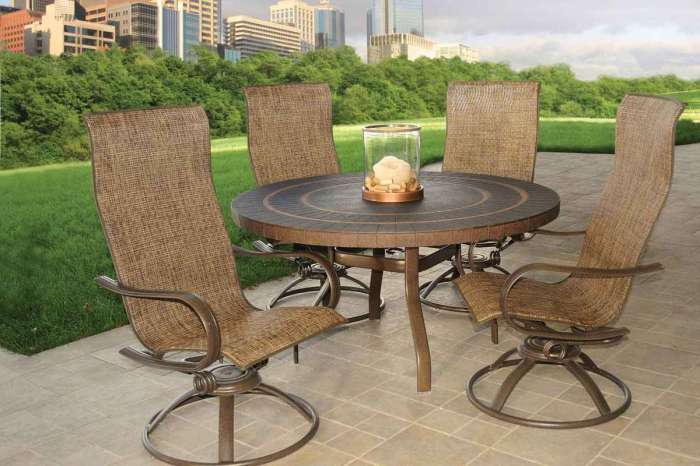
Source: gethypervisual.com
Securing the right commercial patio lounge chairs involves understanding the factors driving their cost and the diverse purchasing options available. Careful consideration of these aspects is crucial for businesses to make informed decisions, ensuring value for investment and aligning with their budget. The process of acquiring these chairs involves more than simply selecting a style; it encompasses a comprehensive evaluation of price, models, and procurement methods.
Factors Influencing Commercial Patio Lounge Chair Prices
Several key factors contribute to the price variation in commercial patio lounge chairs. These include the material quality, construction techniques, the sophistication of the design, and the manufacturer’s reputation. High-end materials like premium aluminum or teak, intricate weaving techniques, and advanced cushioning technologies all contribute to a higher price point. Furthermore, the chair’s durability and weather resistance, factors crucial for outdoor use, directly impact the overall cost.
Purchasing Options for Businesses
Businesses have several purchasing options for commercial patio lounge chairs. Direct procurement from the manufacturer often offers competitive pricing and customization opportunities. Wholesale distributors provide access to a wider range of models and suppliers, often at discounted rates. Retailers, in contrast, might offer a less customized approach, but with the advantage of readily available inventory. Rental options are another viable alternative for businesses needing temporary seating arrangements, providing flexibility and cost-effectiveness in certain situations.
Pricing Models Employed by Manufacturers
Manufacturers often employ diverse pricing models. Some base their pricing on the material and construction, while others consider the quantity purchased. Volume discounts are common, offering a significant reduction in unit cost for bulk orders. Custom designs, while offering tailored solutions, often carry a higher price tag due to the added manufacturing complexity. Pricing can also be influenced by the inclusion of additional features, like integrated cup holders or specialized cushioning.
Comparison of Commercial Patio Lounge Chair Costs
The cost of commercial patio lounge chairs can vary significantly depending on the supplier and the specific model. A comparison table below highlights the price range for different styles from several suppliers. Note that these are estimated prices and may vary depending on current market conditions and specific features.
| Supplier | Model Name | Material | Estimated Price (USD) |
|---|---|---|---|
| Supplier A | “Sunstone” | Powder-coated aluminum, woven synthetic rattan | $250-$350 |
| Supplier B | “Coastal Breeze” | Teak wood, high-density foam cushioning | $400-$600 |
| Supplier C | “Urban Edge” | Powder-coated steel, weather-resistant fabric | $300-$400 |
| Supplier D | “Executive Series” | Commercial-grade aluminum, premium cushions | $550-$750 |
Case Studies of Commercial Patio Lounge Chair Use

Source: ninjalawns.com
Commercial patio lounge chairs are increasingly important for enhancing the customer experience and profitability in various business settings. Successful implementations often involve careful consideration of design, materials, and the overall aesthetic of the space. Understanding how different businesses have successfully integrated these chairs into their design is crucial for optimizing their use.
Restaurant Implementations
Restaurants frequently leverage lounge chairs to create a more relaxed and inviting atmosphere. A key element of success is the selection of chairs that complement the restaurant’s theme. For instance, a contemporary bistro might benefit from sleek, modern chairs, while a more traditional restaurant might pair well with classic, comfortable designs. The chairs must also be durable enough to withstand the rigors of daily use in a high-traffic environment. Consideration must be given to the chairs’ ability to accommodate a variety of seating needs and preferences.
- A popular Mediterranean restaurant, known for its outdoor seating, opted for a series of weather-resistant, woven wicker lounge chairs. The chairs’ natural aesthetic complemented the restaurant’s ambiance, encouraging guests to linger and enjoy the outdoor space. The chairs’ durable construction proved critical in maintaining a high level of comfort and longevity over the busy seasons.
- A modern American cuisine restaurant incorporated lightweight, aluminum lounge chairs. These chairs offered a sleek, minimalist aesthetic, aligning with the restaurant’s contemporary design. The chairs’ ease of cleaning was a crucial factor, facilitating quick and efficient maintenance in the restaurant’s busy environment. This streamlined maintenance contributed to higher efficiency.
Cafe Environments
Cafes often prioritize comfort and relaxation. Lounge chairs offer an ideal solution for fostering a more sociable and relaxed atmosphere. The chairs’ style must blend seamlessly with the cafe’s existing décor, creating a cohesive aesthetic. Furthermore, comfort and durability are essential considerations for maintaining customer satisfaction and longevity of the chairs.
- A trendy coffee shop, aiming for a relaxed vibe, selected comfortable, high-back lounge chairs upholstered in durable, stain-resistant fabric. The comfortable chairs encouraged guests to linger, increasing their average order value and overall customer satisfaction. The chairs’ low-maintenance design also streamlined cleaning routines.
- A quaint, independent bookstore and cafe opted for a collection of sturdy, wooden lounge chairs. The chairs’ rustic charm matched the store’s aesthetic, attracting customers who appreciated the cozy ambiance. The durability of the chairs was crucial in withstanding the constant use in a bookstore and cafe setting.
Hotel Settings
Hotels can utilize lounge chairs to enhance the guest experience. Lounge chairs provide an opportunity to create inviting outdoor spaces, extending the hotel’s ambiance beyond the interior. Selecting lounge chairs that blend with the hotel’s brand aesthetic is paramount. Their comfort and durability are crucial for maintaining a positive customer experience and operational efficiency.
- A luxury resort, committed to a sophisticated aesthetic, used sleek, modern lounge chairs crafted from high-quality, weather-resistant materials. The chairs’ design and high-quality construction complemented the resort’s upscale image. The chairs’ comfort contributed to positive guest reviews and feedback.
- A boutique hotel, seeking a more casual ambiance, chose a collection of durable, wicker lounge chairs. The chairs’ relaxed aesthetic complemented the hotel’s inviting atmosphere. Their easy-care design simplified routine maintenance, reducing operational costs.
Future Trends in Commercial Patio Lounge Chairs
The commercial patio lounge chair market is dynamic, constantly adapting to evolving consumer preferences and technological advancements. Anticipating these shifts is crucial for businesses to stay competitive and meet the needs of diverse clientele. This section explores the potential developments in design, materials, and manufacturing, alongside emerging trends in outdoor furniture and the impact of sustainability and technology.
Design Evolution
Commercial patio lounge chairs are moving beyond simple aesthetics to prioritize comfort and functionality. Ergonomic designs that cater to diverse body types are becoming increasingly important. Modular seating systems that allow for adaptable configurations will likely gain popularity, offering flexibility for different event setups and spaces. The integration of adjustable features, such as reclining angles and integrated lumbar support, will further enhance the comfort and appeal of these chairs. This approach reflects the growing emphasis on user experience and personalized comfort within commercial spaces.
Material Innovations
The push for sustainability will drive the adoption of eco-friendly materials. Recycled and reclaimed materials, such as bamboo and repurposed plastics, will likely be integrated into commercial furniture production. High-performance, weather-resistant fabrics will continue to be a focus, with advancements in stain and fade resistance. Advanced composite materials, known for their durability and lightweight nature, might also see increased usage. This trend towards sustainable and high-performance materials is a direct response to environmental concerns and the need for long-lasting, low-maintenance furniture.
Manufacturing Processes
The manufacturing processes for commercial patio lounge chairs are likely to incorporate automation and 3D printing. Automated production lines will likely increase efficiency and reduce costs. 3D printing allows for intricate designs and customized solutions, offering unique and personalized seating options. These advancements will enable manufacturers to respond more quickly to specific design requests and market demands.
Impact of Sustainability
Environmental consciousness is a major driver in the outdoor furniture industry. The use of recycled and renewable materials, as well as the implementation of responsible manufacturing processes, will be key. Companies that prioritize sustainable practices will likely see increased customer loyalty and market share. Certification programs for sustainable materials and manufacturing will become increasingly important in the decision-making process for both consumers and businesses.
Technological Advancements
Technological advancements are significantly impacting the design and functionality of commercial patio lounge chairs. Smart features, such as integrated heating or cooling elements, will likely be incorporated into some models. Sensors that monitor occupancy and usage patterns may be employed to optimize space and resources. Connectivity features could allow for remote control and adjustment of chair settings. This integration of technology enhances comfort, improves efficiency, and offers a level of personalization that will appeal to a wider range of customers.
Innovative Designs
Examples of emerging designs include lounge chairs with integrated charging stations for electronic devices, chairs that adapt to different ambient lighting conditions, and lounge sets that incorporate retractable shade systems. These innovative features not only enhance the user experience but also respond to the demands of diverse commercial settings. The ability to create adaptable and personalized seating solutions will become a crucial competitive advantage for businesses.
Last Point: Commercial Patio Lounge Chairs
In conclusion, selecting the perfect commercial patio lounge chairs involves a multifaceted approach. Durability, style, comfort, and cost are crucial factors to consider. This guide has provided a thorough understanding of these chairs, enabling businesses to make informed decisions based on their specific needs. By carefully evaluating different materials, designs, and pricing models, businesses can create inviting and functional outdoor spaces that enhance the customer experience and elevate their brand image.

